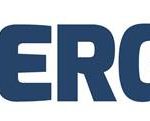
Fostering research excellence
in EU Outermost Regions


Fostering research excellence
in EU Outermost Regions

La Reunion
Research centers or research group
LE2P ENERGY-lab main research focus on the optimisation of electrical energy in critical ecosystems Science operations include :
How to characterise variability in sunlight and the climate in the South West Indian Ocean?
How to extract information and predict energy flows based on the aggregation of massive, multi-scale data?
How best to allocate the energy supply and management between source and multi-storage systems for urban micro-networks ?
How to improve reliability, increase performance, lifespan and reduce the cost of fuel-cell systems and membrane electrolysis?
How to optimise topology and network-communication protocols of wireless
actuators and sensors to manage information and energy in urban micro networks?
How to best capture surrounding energy to supply multi-scale wireless actuators and sensor networks ?
REACT : Renewable energy for self-sustainable island communities
Partner : Horizon2020
2019 – 2020
GYSOMATE : Dynamic management, supervision and optimisation of micronetworks
for regional self-sufficiency in electrical energy
Partner : ERDF
2017 – 2020
SWIO-IOS-NET : Virtual real-time solar and meteorological sensor network
Partner : ADEME Reunion Regional Council COI Europe (ERDF)
2017 – 2020
CARERC : Electromagnetic mapping using sensor networks
Partner : Reunion Regional Council – Europe (ERDF)
2014 – 2020
SYSPACREVERS : An innovative concept with reversible fuel cells to
generate and convert electrical solar energy for storage using a Hydrogen vector
Partner : Reunion Regional Council – Europe (ERDF)
GDR HYSPÀC / NATIONAL NETWORK WITH AN INTERNATIONAL REACH
The aim of the “Hydrogen, systems and fuel cells” (HySPàC)
3652 CNRS research group (GDR) is to to bring researchers and
manufacturers together in the hydrogen storage, production,
fuel cells and systems sectors. LE2P participates in GDR’s
research activities.
GDR SEEDS / NATIONAL NETWORK WITH AN INTERNATIONAL REACH
The SEEDS (Electrical Energy Systems in their Social
Dimension) research group, based at the CNRS, groups
together electrical engineering laboratories and academic
teams. The research group works in close collaboration with
the scientific communities with research work related to
generating, distributing, transforming and using electrical
energy. It also focuses on equipment, methods and technology
contributing in providing effective, safe and environmentallyfriendly
electrical systems. The unit contributes to the research
group’s activities, especially the micro-networks group
GDR ONDES / NATIONAL NETWORK WITH AN INTERNATIONAL REACH
The ONDES 2451 research group organises and develops the
ONDES (“WAVES”) community, as a whole. It covers the areas
of acoustics and electromagnetism in a broad sense, ranging
from microwave to optical frequencies. It participates in the
group’s research activities.
SAURAN / INTERNATIONAL NETWORK
Southern African Universities Radiometric Network – LE2P
has been a member of the observation network since 2015,
providing scientific collaboration.
BSRN / INTERNATIONAL NETWORK
The Baseline Surface Radiation Network is part of the
international World Climate Research Programme (WCRP) and
reports to the World Meteorological Organization (WMO). LE2P
is a network member, takes part in scientific partnerships and
provides high-quality equipment and data certification.
LE2P ENERGY-lab main research focus on the optimisation of electrical energy in critical ecosystems Science operations include :
How to characterise variability in sunlight and the climate in the South West Indian Ocean?
How to extract information and predict energy flows based on the aggregation of massive, multi-scale data?
How best to allocate the energy supply and management between source and multi-storage systems for urban micro-networks ?
How to improve reliability, increase performance, lifespan and reduce the cost of fuel-cell systems and membrane electrolysis?
How to optimise topology and network-communication protocols of wireless
actuators and sensors to manage information and energy in urban micro networks?
How to best capture surrounding energy to supply multi-scale wireless actuators and sensor networks ?
REACT : Renewable energy for self-sustainable island communities
Partner : Horizon2020
2019 – 2020
GYSOMATE : Dynamic management, supervision and optimisation of micronetworks
for regional self-sufficiency in electrical energy
Partner : ERDF
2017 – 2020
SWIO-IOS-NET : Virtual real-time solar and meteorological sensor network
Partner : ADEME Reunion Regional Council COI Europe (ERDF)
2017 – 2020
CARERC : Electromagnetic mapping using sensor networks
Partner : Reunion Regional Council – Europe (ERDF)
2014 – 2020
SYSPACREVERS : An innovative concept with reversible fuel cells to
generate and convert electrical solar energy for storage using a Hydrogen vector
Partner : Reunion Regional Council – Europe (ERDF)
GDR HYSPÀC / NATIONAL NETWORK WITH AN INTERNATIONAL REACH
The aim of the “Hydrogen, systems and fuel cells” (HySPàC)
3652 CNRS research group (GDR) is to to bring researchers and
manufacturers together in the hydrogen storage, production,
fuel cells and systems sectors. LE2P participates in GDR’s
research activities.
GDR SEEDS / NATIONAL NETWORK WITH AN INTERNATIONAL REACH
The SEEDS (Electrical Energy Systems in their Social
Dimension) research group, based at the CNRS, groups
together electrical engineering laboratories and academic
teams. The research group works in close collaboration with
the scientific communities with research work related to
generating, distributing, transforming and using electrical
energy. It also focuses on equipment, methods and technology
contributing in providing effective, safe and environmentallyfriendly
electrical systems. The unit contributes to the research
group’s activities, especially the micro-networks group
GDR ONDES / NATIONAL NETWORK WITH AN INTERNATIONAL REACH
The ONDES 2451 research group organises and develops the
ONDES (“WAVES”) community, as a whole. It covers the areas
of acoustics and electromagnetism in a broad sense, ranging
from microwave to optical frequencies. It participates in the
group’s research activities.
SAURAN / INTERNATIONAL NETWORK
Southern African Universities Radiometric Network – LE2P
has been a member of the observation network since 2015,
providing scientific collaboration.
BSRN / INTERNATIONAL NETWORK
The Baseline Surface Radiation Network is part of the
international World Climate Research Programme (WCRP) and
reports to the World Meteorological Organization (WMO). LE2P
is a network member, takes part in scientific partnerships and
provides high-quality equipment and data certification.